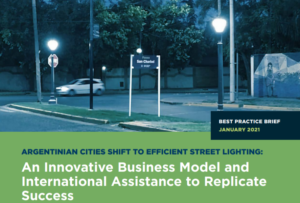Despite the multiple benefits of modern high-performance LED street lighting, as of today average LED penetration globally is still below 15 per cent. The street lighting market is driven by several factors, among which are regulatory policies, LED prices and the culture and morphology of each area, meaning that countries and municipalities differ greatly in LED penetration and business models. For instance, South America has an average rate below 5 per cent compared to Japan or Canada, where rates are around 45-50 per cent. Differences in LED penetration also exist within the same country: some big cities have already reached a 100 per cent switch to LEDs, while smaller ones are still struggling, mainly due to financial, know-how and capacity barriers.
 The above observations also apply to Argentina in South America. In 2019 the capital, the Autonomous City of Buenos Aires, completed the transformation of street lighting to LED. Meanwhile, the majority of smaller cities across the country still mainly rely on old and expensive lighting technologies, such as mercury vapor, high-pressure sodium, compact fluorescent lighting (CFL) or metal halide, as their primary lighting sources.
The above observations also apply to Argentina in South America. In 2019 the capital, the Autonomous City of Buenos Aires, completed the transformation of street lighting to LED. Meanwhile, the majority of smaller cities across the country still mainly rely on old and expensive lighting technologies, such as mercury vapor, high-pressure sodium, compact fluorescent lighting (CFL) or metal halide, as their primary lighting sources.
A new Copenhagen Centre on Energy Efficiency (C2E2) and United for Efficiency case study describes the background to this evolution towards more energy-efficient street lighting, the underpinning research and coordination, and the tools available to assist municipalities implement their own solutions.
This case study is available to download from the C2E2 website.


Leave a Reply